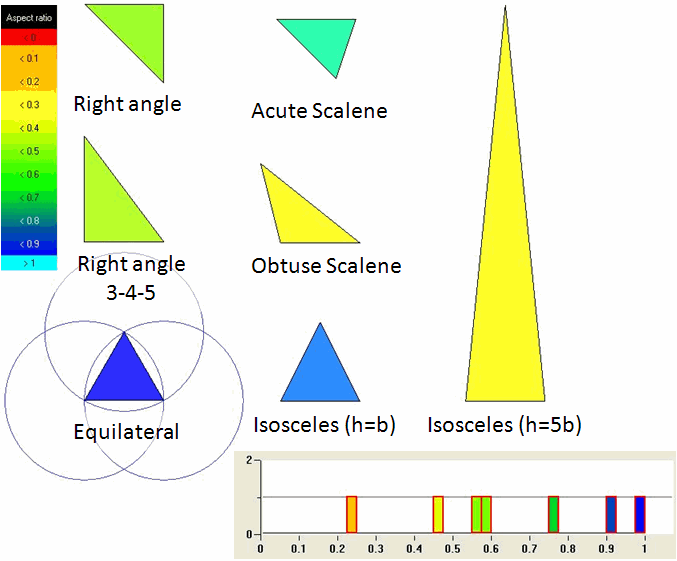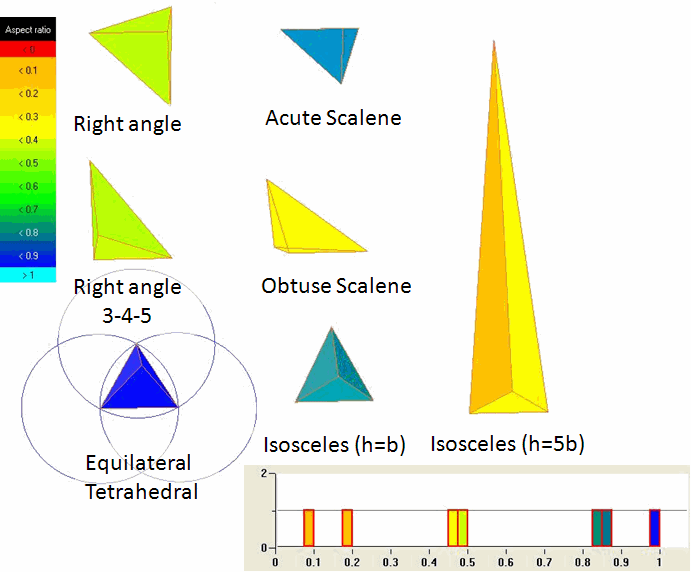The criterion Aspect Ratio is calculated differently for different element types:
Quad
The vectors for each of the 4 quad nodes span a parallelogram. The area of each parallelogram is divided by the length of each component vector squared, to give 8 possible aspect ratios. The minimum ratio is taken as the aspect ratio for the quad element.
Hexa
The aspect ratio is defined by the size of the minimum element edge divided by the size of the maximum element edge. Quadratic hexahedras will also be considered.
Tri
Ansys ICEM CFD calculates the ratio between the area of triangle and the maximum edge length for each element. The values are scaled, so that an aspect ratio of 1 corresponds to a perfectly regular element, while an aspect ratio of 0 indicates that the element has zero area.
Aspect Ratio = (area/max edge length)actual / (area/max edge length)ideal
Tetra
Ansys ICEM CFD calculates the ratio between the volume of the element and the radius of its circumscribed sphere power three. The values are scaled, so that an aspect ratio of 1 corresponds to a perfectly regular element, while an aspect ratio of 0 indicates that the element has zero volume.
Aspect Ratio = (volume/(circumscribed radius)3)actual / (volume/(circumscribed radius)3)ideal





